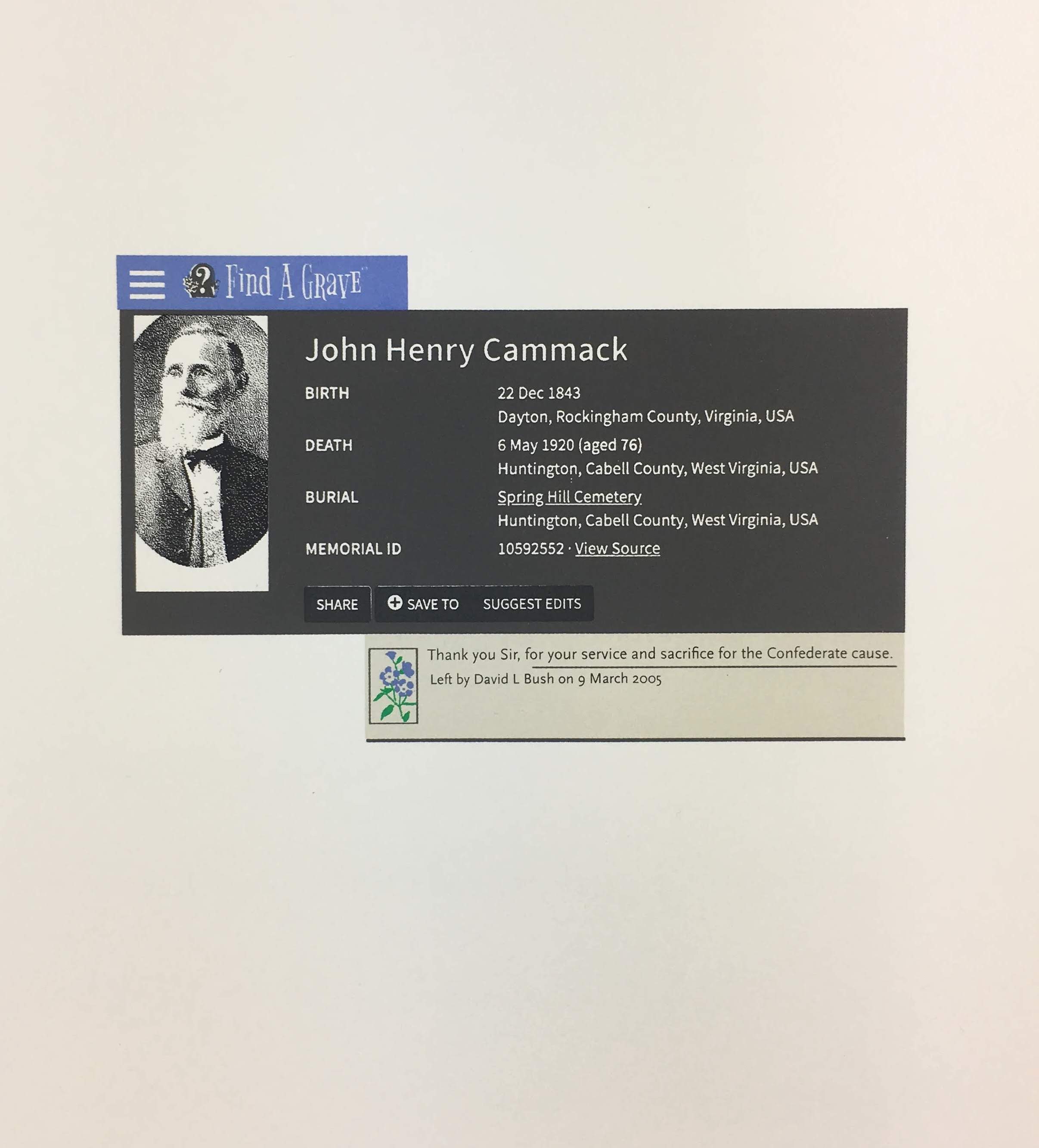
16th Day of March, 2020

Service and Sacrifice
WASHINGTON PLACE ARTIFACTS: 100 YEARS AND BEYOND
Studies related to later project: Said Owners, Said Lots
Multiple new housing subdivisions in turn-of-the-century Huntington were owned by former Civil War confederate officers. Washington Place, along what is now Hal Greer Blvd. was one of these subdivisions; it was built for Black Huntingtonians by John Henry Cammack, a confederate general who returned to Huntington and became involved in real estate. According to historian Cicero M. Fain III, Washington Place was created to keep Black Huntingtonians out of the areas of town further to the south where more white people lived. Cammack and others also worked to retroactively install racial covenants in surrounding areas.
Housing covenants trace the changing attitudes of late Reconstruction and echo the increase in white racial violence after 1900.
An ongoing project of reconfigured documents.
Screenprint on Rives BFK
2019
Studies related to later project: Said Owners, Said Lots
Multiple new housing subdivisions in turn-of-the-century Huntington were owned by former Civil War confederate officers. Washington Place, along what is now Hal Greer Blvd. was one of these subdivisions; it was built for Black Huntingtonians by John Henry Cammack, a confederate general who returned to Huntington and became involved in real estate. According to historian Cicero M. Fain III, Washington Place was created to keep Black Huntingtonians out of the areas of town further to the south where more white people lived. Cammack and others also worked to retroactively install racial covenants in surrounding areas.
Housing covenants trace the changing attitudes of late Reconstruction and echo the increase in white racial violence after 1900.
An ongoing project of reconfigured documents.
Screenprint on Rives BFK
2019